Sisal, Hemp
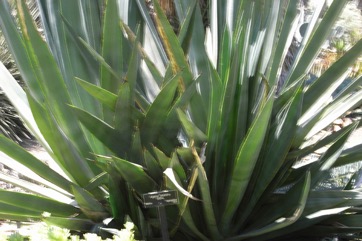
A tropical plant. It suits tropical and subtropical places. It grows on a wide range of soils. It can withstand waterlogging and can tolerate drought. It suits hardiness zones 9-11. It does best in gritty, well drained soils and in full sun. It can grow in light shade. It is sensitive to cold. It can grow in arid places.
Also known as:
Agave sisal, Khonje, Lafa, Mkonge, Na-nat-shaw, Shikwenga, Te robu, Umugweegwe, Yaxci
Synonyms
- Agave amaniensis Trel. & Nowell
- Agave rigida Mill. var. sisalana Perr.
- Agave segurae D. Guillot & P. Van der Meer
- Agave sisalana var. armata Trel.
Edible Portion
- Leaves, Sap, Plant heart, Flower stalk, Vegetable
Where does Sisal grow?
Found in: Africa, Angola, Asia, Australia, Belize, Benin, Botswana, Burkina Faso, Cayman Islands, Central Africa, Central America, China, East Africa, East Timor, El Salvador, Eswatini, Fiji, Grenada, Guatemala, Haiti, Hawaii, Honduras, India, Indochina, Indonesia, Kenya, Kiribati, Madagascar, Malawi, Malaysia, Marshall Islands, Mediterranean, Mexico, Micronesia, Mozambique, Myanmar, North America, Pacific, Pan tropical, Papua New Guinea, PNG, Rwanda, Sao Tome and Principe, SE Asia, South Africa, Southern Africa, South America, St Helena, Swaziland, Tanzania, Timor-Leste, Uganda, United States, Venezuela, Zambia, Zimbabwe
Notes: There are about 250 Agave species. The Agavaceae are mostly in the tropics and subtropics.
Status: It is not known if it is used for food in Papua New Guinea.
Growing Sisal, Hemp
Cultivation: Plants are normally grown from suckers or from the bulbils on the flower stalk. Mostly very few of the seeds will grow. After flowering the whole plant dies. Flowering normally occurs after 7 years.
Edible Uses: The sweet sap is used to make beer. The heart of the new shoots is eaten. The flower stalk can be boiled or roasted.
Production: The plant is fast growing.
Nutrition Info
per 100g edible portion| Edible Part | Energy (kcal) | Protein (g) | Iron (mg) | Vitamin A (ug) | Vitamin c (mg) | Zinc (mg) | % Water |
|---|---|---|---|---|---|---|---|
| Heart of plant | - | - | - | - | - | - | |
| Sap | - | - | - | - | - | - |
Sisal, Hemp Photos

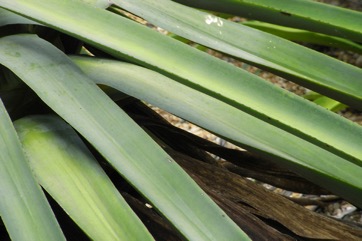
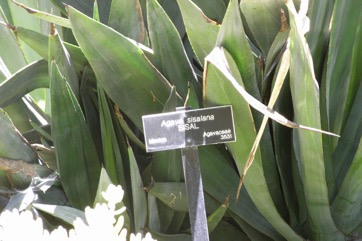
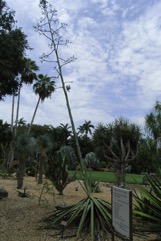
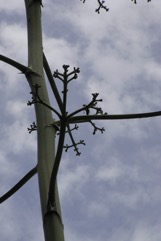
References
Ambasta S.P. (Ed.), 2000, The Useful Plants of India. CSIR India. p 20
Bircher, A. G. & Bircher, W. H., 2000, Encyclopedia of Fruit Trees and Edible Flowering Plants in Egypt and the Subtropics. AUC Press. p 13
Blamey, M and Grey-Wilson, C., 2005, Wild flowers of the Mediterranean. A & C Black London. p 488
Borrell, O.W., 1989, An Annotated Checklist of the Flora of Kairiru Island, New Guinea. Marcellin College, Victoria Australia. p 13
Bunderson, W. T. et al, 2002, Common Agroforestry Species in Malawi. Malawi Agroforestry Extension Project, Pubication No. 46, Lilongwe. p 2
Cobley, L.S. (rev. Steele, W.M.) 2nd Ed., 1976, An Introduction to the Botany of Tropical Crops. Longmans. p 280
Cowie, I, 2006, A Survey of Flora and vegetation of the proposed Jaco-Tutuala-Lore National Park. Timor-Lests (East Timor) www.territorystories.nt/gov.au p 42
Cundall, P., (ed.), 2004, Gardening Australia: flora: the gardener's bible. ABC Books. p 116
Facciola, S., 1998, Cornucopia 2: a Source Book of Edible Plants. Kampong Publications. p 3
Fowler, D. G., 2007, Zambian Plants: Their Vernacular Names and Uses. Kew. p 67
Franklin, J., Keppel, G., & Whistler, W., 2008, The vegetation and flora of Lakeba, Nayau and Aiwa Islands, Central Lau Group, Fiji. Micronesica 40(1/2): 169–225, 2008
Hani Medicine of Xishuangbanna, 1999, p 763
Henty, E.E., 1980, Harmful Plants in Papua New Guinea. Botany Bulletin No 12. Division Botany, Lae, Papua New Guinea. p 12
Katende, A.B., Birnie, A & Tengnas B., 1995, Useful Trees and Shrubs for Uganda. Identification, Propagation and Management for Agricultural and Pastoral Communities. Technical handbook No 10. Regional Soil Conservation Unit, Nairobi, Kenya. p 70
Lazarides, M. & Hince, B., 1993, Handbook of Economic Plants of Australia, CSIRO. p 10
Llamas, K.A., 2003, Tropical Flowering Plants. Timber Press. p 46
Marinelli, J. (Ed), 2004, Plant. DK. p 331
Martin, F.W. & Ruberte, R.M., 1979, Edible Leaves of the Tropics. Antillian College Press, Mayaguez, Puerto Rico. p 174
Mbuya, L.P., Msanga, H.P., Ruffo, C.K., Birnie, A & Tengnas, B., 1994, Useful Trees and Shrubs for Tanzania. Regional Soil Conservation Unit. Technical Handbook No 6. p 84
Paczkowska, G. & Chapman, A.R., 2000, The Western Australian Flora. A Descriptive Catalogue. Western Australian Herbarium. p 29
Purseglove, J.W., 1972, Tropical Crops. Monocotyledons. Longmans p 14
Royal Botanic Gardens, Kew (1999). Survey of Economic Plants for Arid and Semi-Arid Lands (SEPASAL) database. Published on the Internet; http://www.rbgkew.org.uk/ceb/sepasal/internet [Accessed 24th March 2011]
Salako, V. K. et al, 2013, Home gardens: an assessment of their biodiversity and potential contribution to conservation of threatened species and crop wild relatives in Benin. Genet Resour Crop Evol
Siemonsma, J. S. & Kasem Piluek, eds. 1993. Vegetables. In: Plant Resources of South-East Asia (PROSEA) 8:311
Smith, A.C., 1979, Flora Vitiensis Nova, Lawaii, Kuai, Hawaii, Volume 1 p 154
Staples, G.W. and Herbst, D.R., 2005, A tropical Garden Flora. Bishop Museum Press, Honolulu, Hawaii. p 580
Sukarya, D. G., (Ed.) 2013, 3,500 Plant Species of the Botanic Gardens of Indonesia. LIPI p 999
Swaziland's Flora Database http://www.sntc.org.sz/flora
Terra, G.J.A., 1973, Tropical Vegetables. Communication 54e Royal Tropical Institute, Amsterdam, p 19
Thaman, R. R., 1987, Plants of Kiribati: A listing and analysis of vernacular names. Atoll Research Bulletin No. 296
U.S. Congr. 25, Sess. 2, House of Represent. Rep. 564:(8,9,16,47,60,86 )87. 8 Mar 1838 (Senate Rep. 300:36, 105, t. 1, 2, 4. 12 Mar 1838)
Vander Velde, N, 2003, The Vascular Plants of Majuro Atoll, Republic of the Marshall Islands. Atoll research Bulletin. No. 503. Smithsonian Institute. p 16
Vickery, M.L. and Vickery, B., 1979, Plant Products of Tropical Africa, Macmillan. p 74, 95
Wienk, J.F. and S’chendellaan, A.,van, Sisal and relatives, in Simmonds, N.W., (Ed.), 1979, Evolution of Crop Plants. Longman. p 1
Williamson, J., 2005, Useful Plants of Malawi. 3rd. Edition. Mdadzi Book Trust. p 17